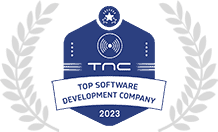NetSuite’s flexibility and extensive integration capabilities make it an excellent choice for businesses seeking to optimize their software ecosystems. Understanding the various integration methods available will empower organizations to leverage their existing tools while maximizing the functionality of NetSuite.
1. Understanding NetSuite Integration
Before diving into integration methods, it’s essential to grasp the concept of NetSuite integration. Integration refers to the process of connecting different software applications to work together efficiently. When integrating NetSuite, businesses can share data and processes across various platforms, enhancing collaboration and decision-making.
- Data Synchronization: Integration enables data to flow between NetSuite and other applications, ensuring that all systems are updated with accurate information. This reduces the risk of errors and inconsistencies.
- Streamlined Processes: By integrating systems, businesses can automate workflows and eliminate manual data entry, saving time and resources.
- Improved Reporting: Integration allows for consolidated reporting across applications, providing a comprehensive view of business performance and metrics.
2. Key Integration Methods
There are several methods for integrating NetSuite with other business applications, each with its advantages and considerations:
2.1. SuiteTalk Web Services
NetSuite SuiteTalk is a powerful web services API that allows developers to connect and integrate external applications with NetSuite. This method is ideal for custom integrations and provides a flexible solution for businesses with specific requirements.
- SOAP and REST APIs: SuiteTalk supports both SOAP (Simple Object Access Protocol) and REST (Representational State Transfer) APIs, offering developers the choice to use the most suitable method for their needs.
- Custom Development: Organizations can create custom integration solutions tailored to their unique workflows and requirements using SuiteTalk. This ensures that the integration aligns with existing processes.
2.2. SuiteCloud Integration Platform
NetSuite’s SuiteCloud Integration Platform is designed to simplify the integration process, enabling businesses to connect various applications quickly and efficiently. It offers pre-built connectors, allowing for faster deployment and reduced development time.
- Pre-Built Integrations: SuiteCloud offers numerous pre-built connectors for popular applications such as Salesforce, Shopify, and Zendesk. These connectors can significantly speed up the integration process and reduce the need for custom development.
- User-Friendly Interface: The SuiteCloud platform provides a user-friendly interface that allows non-technical users to manage integrations without extensive programming knowledge.
2.3. Middleware Solutions
Middleware solutions act as intermediaries that facilitate communication between NetSuite and other applications. They can help synchronize data, automate workflows, and streamline processes without the need for extensive custom development.
- Popular Middleware Options: Some widely used middleware solutions include Boomi, MuleSoft, and Jitterbit. These platforms provide robust features for integrating NetSuite with various applications.
- Scalability and Flexibility: Middleware solutions often offer scalability, allowing businesses to adapt their integrations as their needs change. They also support multiple integration scenarios, enabling organizations to connect numerous applications seamlessly.
3. Benefits of Integrating NetSuite with Other Applications
Integrating NetSuite with other business applications can provide numerous advantages that enhance overall business performance. Let’s explore some of the key benefits:
3.1. Enhanced Data Visibility
Integrating NetSuite with other applications improves data visibility across the organization. When data is synchronized, employees can access real-time information from various sources, leading to informed decision-making.
- Unified Reporting: Integrated systems allow for consolidated reporting, providing a holistic view of business performance and enabling better strategic planning.
- Faster Access to Information: Employees can retrieve data quickly, reducing the time spent searching for information across different systems.
3.2. Improved Efficiency and Productivity
By automating workflows and eliminating manual data entry, integration significantly enhances efficiency and productivity. Employees can focus on higher-value tasks rather than repetitive administrative work.
- Time Savings: Automation streamlines processes, reducing the time required for data entry, reconciliation, and reporting.
- Error Reduction: Integration minimizes the risk of human errors associated with manual data entry, leading to more accurate information and fewer discrepancies.
3.3. Streamlined Customer Interactions
Integrating NetSuite with customer relationship management (CRM) systems enables organizations to enhance customer interactions and support. Access to real-time customer data allows teams to respond promptly and effectively.
- Personalized Service: Customer service representatives can access complete customer profiles, enabling them to provide tailored support based on past interactions and preferences.
- Improved Sales Processes: Sales teams can leverage integrated data to identify leads, track opportunities, and close deals more efficiently.
4. Best Practices for NetSuite Integration
To ensure successful integration of NetSuite with other business applications, organizations should follow these best practices:
4.1. Define Clear Objectives
Before starting the integration process, it’s crucial to define clear objectives and goals. Understand what you want to achieve with the integration and how it aligns with your business strategy.
- Identify Key Use Cases: Determine specific use cases for integration, such as data synchronization, automated workflows, or reporting needs. This will help guide the integration process.
- Set Measurable Goals: Establish measurable goals to evaluate the success of the integration. This could include metrics related to efficiency, data accuracy, or user adoption.
4.2. Choose the Right Integration Method
Selecting the appropriate integration method is critical for ensuring a smooth process. Consider factors such as technical expertise, budget, and scalability when choosing the right approach.
- Assess Technical Skills: Evaluate your team’s technical skills and resources to determine whether a custom solution or middleware would be more suitable.
- Consider Future Growth: Choose an integration method that can accommodate future growth and changes in your business processes.
4.3. Prioritize Data Security
Data security should be a top priority during the integration process. Protecting sensitive information is crucial to maintaining customer trust and complying with regulations.
- Implement Security Protocols: Use secure data transfer protocols and encryption to protect sensitive data during integration.
- Regularly Monitor and Audit: Continuously monitor and audit integration processes to identify potential vulnerabilities and ensure compliance with data protection regulations.
5. Common Challenges in NetSuite Integration
While integrating NetSuite with other applications can bring significant benefits, organizations may encounter challenges along the way. Understanding these challenges can help businesses prepare and navigate the integration process effectively.
5.1. Complexity of Data Mapping
Mapping data between different applications can be complex, especially when dealing with disparate systems that have unique data structures.
- Inconsistent Data Formats: Different applications may use varying data formats, requiring careful mapping to ensure compatibility.
- Data Quality Issues: Poor data quality can complicate the integration process. Organizations must ensure that data is clean and accurate before integration.
5.2. Change Management
Integration projects often involve changes in workflows and processes, which can lead to resistance from employees.
- Communicate Clearly: Clearly communicate the benefits of integration to employees and provide training to help them adapt to new processes.
- Involve Stakeholders: Involve key stakeholders from various departments in the integration process to gain buy-in and ensure that their needs are addressed.
5.3. Cost Considerations
Depending on the chosen integration method, costs can vary significantly. Organizations must carefully evaluate their budget and resources before proceeding.
- Assess Total Costs: Consider all associated costs, including software, development, maintenance, and potential downtime during the integration process.
- Explore Funding Options: Investigate potential funding options or grants that may be available for businesses seeking to enhance their technology infrastructure.
6. Case Studies: Successful NetSuite Integrations
Examining real-world examples of successful NetSuite integrations can provide valuable insights for organizations considering similar initiatives. Here are two notable case studies:
6.1. Company A: E-Commerce Integration
Company A, a rapidly growing e-commerce retailer, faced challenges with inventory management and order processing due to its reliance on multiple disconnected systems. To address these issues, the company integrated NetSuite with its e-commerce platform and third-party logistics provider.
- Integration Method: Using the SuiteCloud Integration Platform, the company implemented pre-built connectors to link NetSuite with its e-commerce and logistics systems.
- Results: The integration streamlined order processing, reduced fulfillment times, and improved inventory visibility. As a result, Company A experienced a 30% increase in order accuracy and a 20% reduction in shipping delays.
6.2. Company B: CRM Integration
Company B, a B2B services provider, sought to enhance its customer relationship management capabilities. The company integrated NetSuite with its existing CRM solution to achieve a unified view of customer data.
- Integration Method: The company opted for a middleware solution to facilitate data synchronization between NetSuite and its CRM system.
- Results: The integration improved lead tracking, enhanced sales team productivity, and enabled personalized customer interactions. Company B reported a 25% increase in sales conversion rates within six months of the integration.
7. The Future of NetSuite Integration
As technology continues to evolve, the future of NetSuite integration looks promising. Several trends are likely to shape the landscape of business application integration in the coming years:
7.1. Increased Focus on Automation
Automation will play a central role in future integrations, enabling organizations to streamline workflows and improve efficiency.
- Intelligent Automation: The integration of artificial intelligence (AI) and machine learning (ML) will allow businesses to automate complex tasks, such as data analysis and reporting.
- Robotic Process Automation (RPA): RPA technologies will facilitate the automation of repetitive tasks, freeing employees to focus on higher-value activities.
7.2. Enhanced Data Analytics
The integration of advanced analytics tools with NetSuite will empower organizations to leverage data for informed decision-making.
- Predictive Analytics: Businesses will be able to harness predictive analytics to forecast trends and make proactive decisions based on real-time data insights.
- Data Visualization: Enhanced data visualization tools will provide intuitive dashboards, enabling users to analyze and interpret data quickly and effectively.
7.3. Greater Emphasis on API-First Integration
An API-first approach to integration will become increasingly popular, allowing organizations to leverage pre-built APIs to connect various applications easily.
- Rapid Deployment: API-first integration enables faster deployment of new applications and services, providing businesses with agility and flexibility.
- Interoperability: The focus on interoperability will allow organizations to connect an ever-expanding array of software tools, ensuring a seamless flow of data across systems.
8. Conclusion
Integrating NetSuite with other business applications is a strategic move that can significantly enhance organizational efficiency, data visibility, and customer engagement. By understanding the various integration methods, benefits, and best practices, businesses can successfully connect their software ecosystems and unlock new opportunities for growth.
As organizations continue to embrace technology and seek innovative solutions, the integration of NetSuite will play a pivotal role in shaping their operational strategies. By staying informed about trends and advancements in integration technology, businesses can position themselves for success in the ever-evolving digital landscape.
FAQs
- What is NetSuite integration?
- NetSuite integration is the process of connecting NetSuite with other business applications to enable data sharing and streamline workflows.
- What are the benefits of integrating NetSuite?
- Benefits include enhanced data visibility, improved efficiency, streamlined customer interactions, and better reporting capabilities.
- What integration methods are available for NetSuite?
- Common methods include SuiteTalk Web Services, SuiteCloud Integration Platform, and middleware solutions.
- How can I choose the right integration method for my business?
- Assess your technical skills, budget, and scalability needs to determine the most suitable integration approach.
- What challenges might I face during the integration process?
- Common challenges include complexity in data mapping, change management, and cost considerations.
- How does integration improve data visibility?
- Integration allows real-time data synchronization across systems, providing a unified view of information for better decision-making.
- What role does automation play in NetSuite integration?
- Automation streamlines workflows, reduces manual tasks, and enhances efficiency, allowing employees to focus on higher-value activities.
- Can I integrate NetSuite with my e-commerce platform?
- Yes, integrating NetSuite with e-commerce platforms is a common use case that can enhance inventory management and order processing.
- What is the SuiteCloud Integration Platform?
- SuiteCloud is NetSuite’s integration platform that offers pre-built connectors and user-friendly tools for integrating with other applications.
- How can I ensure data security during integration?
- Implement secure data transfer protocols, encryption, and regular monitoring to protect sensitive information during integration.
- What are pre-built integrations?
- Pre-built integrations are ready-to-use connectors that simplify the integration process with popular applications, reducing development time.
- How does integration enhance customer interactions?
- Integration provides customer service teams with real-time access to customer data, enabling personalized support and improved engagement.
- What types of businesses benefit from NetSuite integration?
- Businesses of all sizes and industries can benefit from NetSuite integration, particularly those with complex software ecosystems.
- How can I assess the success of my integration?
- Measure the success of your integration by evaluating metrics such as efficiency gains, data accuracy, and user adoption.
- What is middleware?
- Middleware is software that acts as an intermediary between applications, facilitating communication and data synchronization.
- Can NetSuite be integrated with CRM systems?
- Yes, integrating NetSuite with CRM systems is a common practice to enhance sales and customer relationship management.
- What future trends should I be aware of in NetSuite integration?
- Key trends include increased focus on automation, enhanced data analytics, and API-first integration approaches.
- How do case studies help in understanding integration?
- Case studies provide real-world examples of successful integrations, offering insights and best practices for organizations considering similar initiatives.
- What is the importance of stakeholder involvement in integration?
- Involving stakeholders ensures that their needs are addressed, leading to smoother implementation and higher user adoption.
- How can I get started with integrating NetSuite?
- Begin by defining your integration goals, assessing your needs, and choosing the right integration method that aligns with your business strategy.
- How to Optimize Inventory Management with NetSuite - October 4, 2024
- Best Practices for Customizing NetSuite to Meet Business Needs - October 4, 2024
- How to Successfully Migrate Your Business Data to NetSuite - October 4, 2024




















